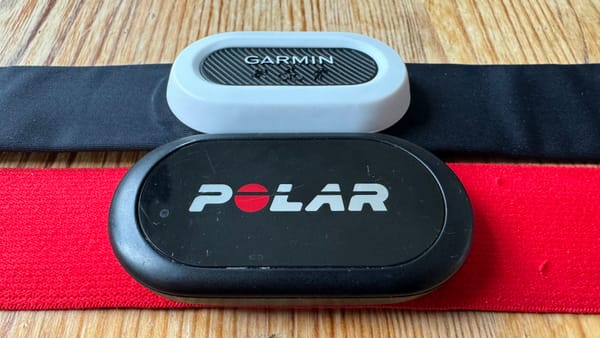A Tale of Two Trainers

Bicycle trainers can be divided into two broad categories: those that support the bike, and those that don't. An example of the former would be the Tacx Neo 2T, or a Wahoo Kickr: both replace the rear wheel of the bike, holding it upright. The latter category is all about rollers, that allow both wheels to spin, and the bike balances as it does on the road.
When I broke my arm, I bought the Tacx Neo 2T so I could ride safely while it healed. Faced with eight days of quarantine when visiting the UK, I bought an Elite Arion Mag Roller set, both heavily discounted but in perfect condition via Amazon Warehouse.
The Tacx Neo 2T required is significantly more expensive, and touts road feel (ie it can simulate cobblestones), as well as simulating a freewheel on descents, and changing resistance to match real-world climbs: it has a lot of bells and whistles, and is an excellent trainer, but only for the leg muscles.
The Mag Rollers are much cheaper, and more simple: two rollers to support the rear wheel, one of which drives the front wheel via a rubber band. It has three levels of resistance, controlled by a switch on the side. The rollers train your legs, but they also work every muscle you normally use when cycling, as you are actually cycling.
This is the big difference between the two: the Neo 2T simulates the cycling experience, while the Mag Rollers deliver the experience. A roller ride is tiring not just on the legs, but the arms, hands, core and mind, as well.
Pedal Smoothness
The Mag Rollers don't just work your muscles: they work your technique, too. If your pedalling is at all jerky, you get instant feedback delivered via wobbles in the bike. You really have to develop excellent technique to pedal higher than about 60 RPM, let alone standing up.
How To Roller Ride
TL;DR? Rollers are harder than stationary trainers. Rollers let you actually ride a bike. Rollers are intimidating at first, and you can fall off them, just like a bike. This information was gleaned from several YouTube videos, and a morning of experimenting.
- Put your rollers in a doorway. This way, when you wobble, you only have to fall the distance from the doorway to your shoulder.
- Get your bike into its heaviest or second heaviest gear to start: as with riding outdoors, speed stabilises, and the faster you can get up to speed the better.
- Start out with a low cadence: it's easy to pedal smoothly at a low cadence, probably 50-60 RPM.
- Don't look at your front wheel. Look ahead, instead, just like riding.
- Relax, pedal, pedal smoothly.
- As your confidence increases, shift to a lighter gear and increase your cadence. Work your core to counterbalance your legs and keep the bike steady.
- When you want to get off, apply the brakes, and dismount as normal, taking into account the extra height above the ground.
In Summary...
...roller trainers are cheaper, and make you work harder. It's a lot more fun. Sure, being able to simulate the real world is wonderful, and roller trainers are noisy, and wear your tyres, but the riding experience, and corresponding riding proficiency improvement is more than worth it.



